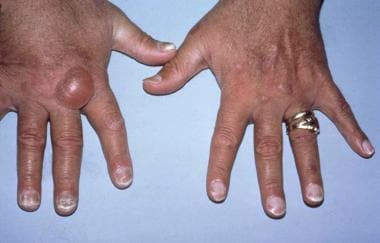The kidney is an important anatomical structure that
performs many tasks that help to sustain life. This fist-sized organ is located
in the lower abdominal cavity just in front of the bottom set of ribs and is
well-known for its role in filtering water and waste from the bloodstream. The
critical nature of filtration is demonstrated by the fact that most people have
two kidneys that are capable of enlarging to compensate for a decrease in
functionality of either kidney. What many people fail to realize is that the
kidneys also perform many other important tasks including blood pressure
regulation and hormone secretion.
The signs and symptoms associated with the diverse
responsibilities of the kidneys have become more concerning in recent years
because of the spike in new end stage renal disease cases secondary to diabetes
and high blood pressure. As demand for renal care continues, it is very
important for medical personnel to educate the public on the health
consequences of renal disease and the steps that can be taken to help reduce
the risk of damaging the kidneys. An understanding of what the kidneys do along
with the steps that can be taken to reverse the prevalence of renal failure is
the first step in reversing the trend towards widespread chronic kidney
disease.
Filtration of the bloodstream is easily the most important
job that the kidneys perform. They accomplish this monumental task using a
series of blood vessels, collecting tubes, and membranes that are permeable to
small particles such as water and waste. As blood travels through the kidneys
it passes by membranes that allow water and waste to pass through and
accumulate it the collecting tubes while preventing important particles such as
blood and proteins from leaving the blood vessels. The filtrate that is
collected is then transported along a series of concentration gradients and
transport channels that give the body the opportunity to absorb any elements
that it can still use. The remaining filtrate is sent to the bladder where it
is stored as urine until it can be excreted.
When the kidneys become damaged, they often lose the ability
to remove potentially harmful particles from the body. This allows water and
waste to accumulate in the body and causes uncomfortable symptoms that often
require dialysis treatment. An abnormally high level of water and waste in the
body is referred to as uremia and is often associated with swelling of the
face, hands, and feet; dry and itchy skin; unusual changes in urine production;
an ammonia smell to the breath; a persistent metallic taste in the mouth;
muscle cramps; fatigue; diarrhea; constipation; and many other problems. Those
who are at risk of developing renal failure are encouraged to seek professional
medical advice if they begin to experience any of these symptoms.
The secretion of erythropoietin (EPO) is another important
role that the kidney has. EPO is a hormone that functions to communicate the
need for additional red blood cells to the marrow found at the center of the
bones. The kidneys usually know when to secrete erythropoietin based on the
level of oxygen in the blood. If the kidneys have been damaged, they may not be
capable of determining the appropriate level of EPO secretion and often fail to
inform the bone marrow about the need for more red blood cells. This results in
a deficiency in oxygen carrying capacity and blood volume that is commonly
referred to as anemia. In many cases, the left ventricle of the heart will
enlarge in an attempt to compensate for oxygen deprivation in cells throughout
the body. This condition is known as left ventricular hypertrophy and it causes
heart failure in many renal failure patients.
Another important hormone secreted by the kidneys is called
calcitriol. This hormone helps facilitate the absorption of calcium from digested
food as it travels along the gastrointestinal tract. Another name for this
hormone is active Vitamin D. A deficiency in calcitriol causes the parathyroid
glands to secrete abnormal levels of parathyroid hormone (PTH) that functions
to pull calcium from the bones and place it in the blood. Although this process
restores proper levels of calcium in the bloodstream it also weakens the bones
and causes many problems including calcium deposition in the blood vessels and
heart. This can cause signs and symptoms such as muscle cramps, a
predisposition to bone fractures, visual changes, and mental changes.
The diverse array of responsibilities that the kidneys have
demonstrates the need for a lifestyle that supports renal health. The growing
prevalence of chronic diseases in the United States demands that more effective
public awareness campaigns be implemented. Those who work in the industry as
technicians and nurses are often able to have the greatest influence on people
because they spend the most time with patients and are acutely aware of the
damage that is caused by kidney disease. The basic concepts outlined above are
important for the provision of high quality care and the delivery of effective
public awareness campaigns.
Those who are interested in learning more about the
importance of the kidneys and the dialysis treatment process are encouraged to
check out http://www.dialysistechniciansalary.org/ where they will find
information on many industry relevant topics such as dialysis side effects,
types of dialysis, kidney function, technician training, and much more. The
first step to reducing the prevalence of renal failure in the United States is
improving public awareness. Careful review of these topics allows individuals
to provide better care to patients and improve the overall health of their
community.
Article Source: http://EzineArticles.com/?

No comments:
Post a Comment